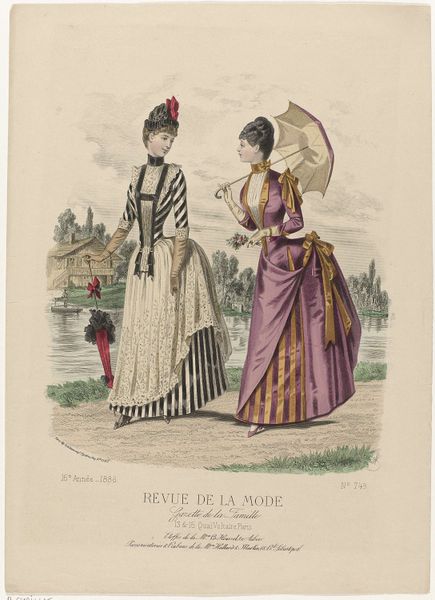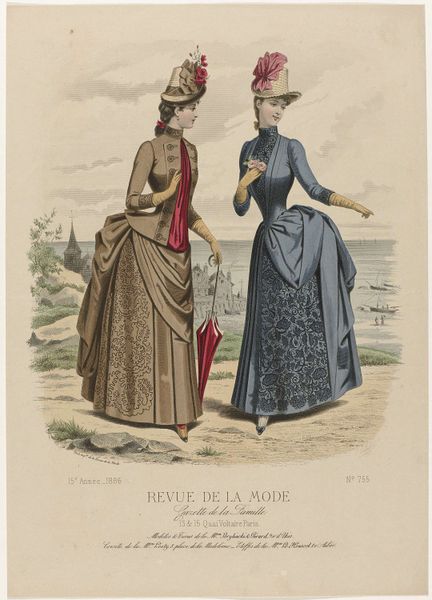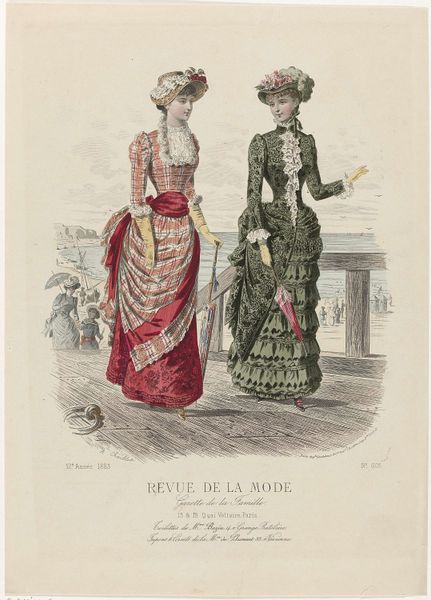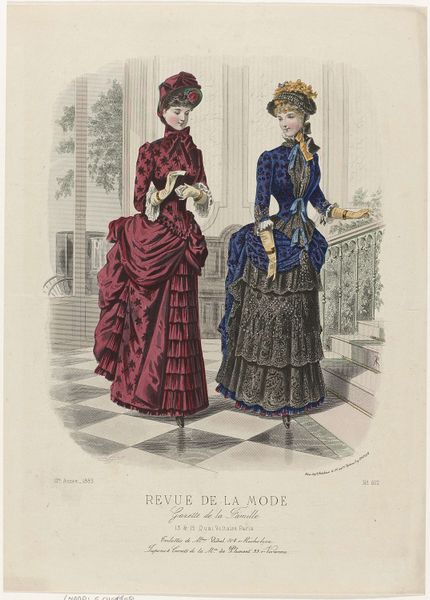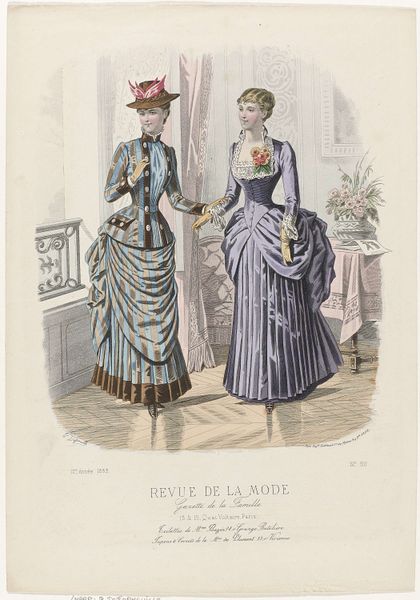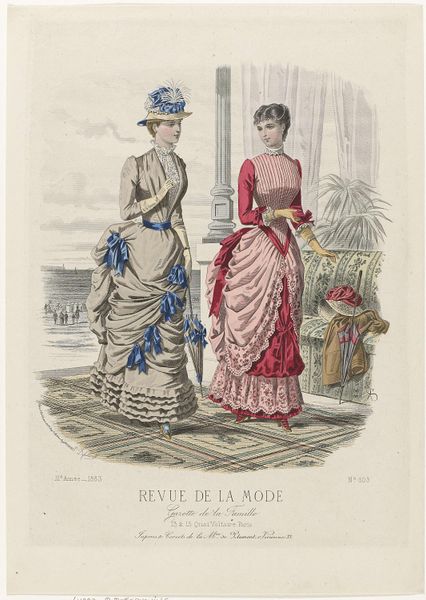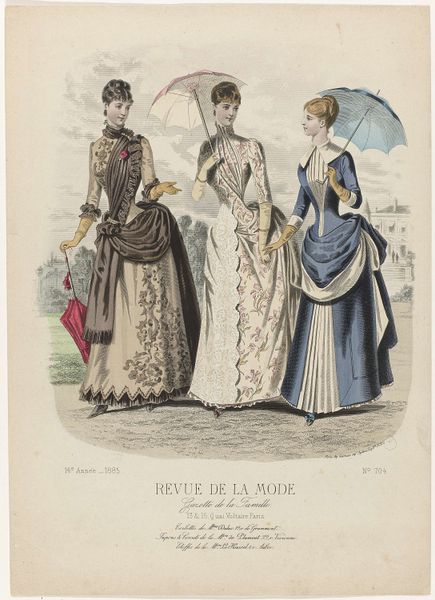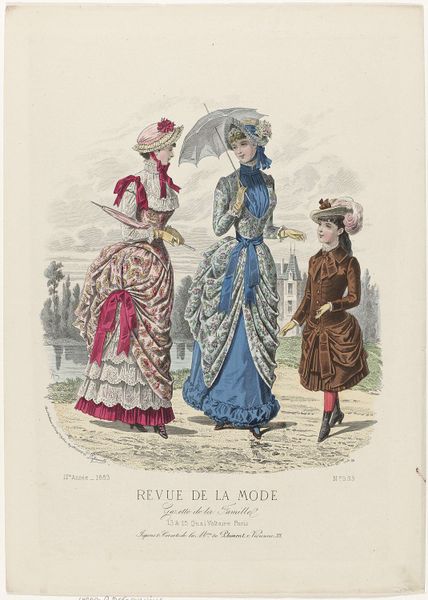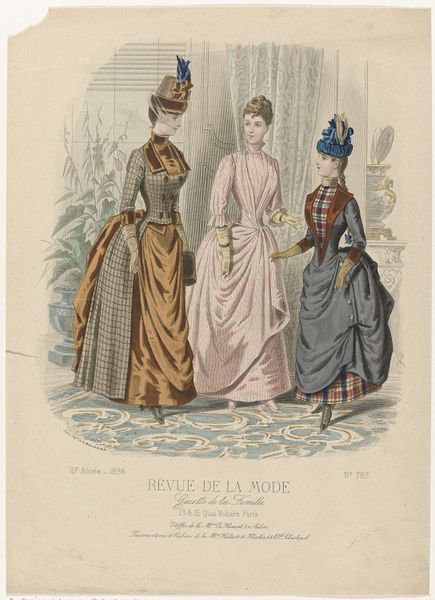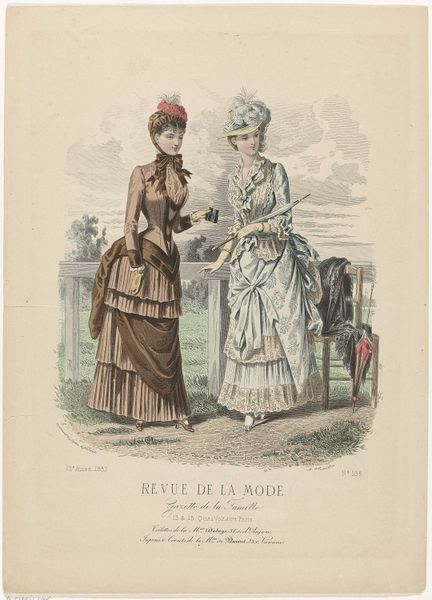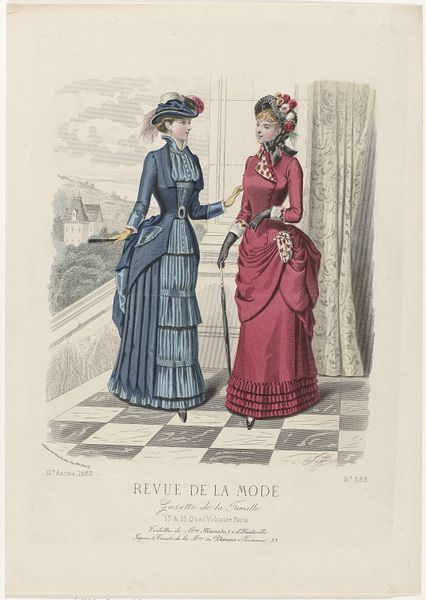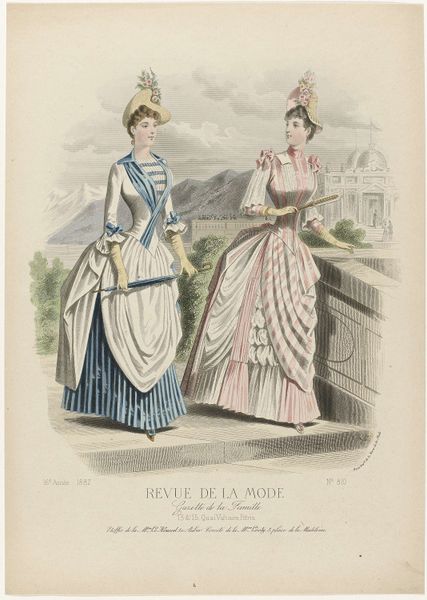
Revue de la Mode, Gazette de la Famille, dimanche 19 juillet 1885, 14e Année, No. 707: Toilettes de M.me Duluc (...) 1885
0:00
0:00
Dimensions: height 375 mm, width 268 mm
Copyright: Rijks Museum: Open Domain
Curator: Here we have a print titled "Revue de la Mode, Gazette de la Famille," created by A. Chaillot in 1885. It's a lithograph that appeared in a fashion magazine, showcasing the latest styles. Editor: My immediate impression is of an idealized femininity. It’s romantic but also a little restrictive, even performative. Curator: Absolutely. These fashion plates were more than just illustrations; they were aspirational tools, dictating acceptable modes of dress and behavior for women within specific social strata. Note how the background depicts a leisurely beach scene populated by the bourgeoisie. The fashions subtly reflect the environment of upper-class leisure, communicating status and belonging. Editor: The repetition of floral motifs, particularly on the dress to the right, speaks volumes. Flowers have historically symbolized fertility and beauty, but also fragility. Paired with the tailored structure of the garments, this visual vocabulary represents the societal pressures of the era, where women were both ornamental and constrained by domestic expectations. The hats and umbrellas they hold are very telling as well! Curator: And it's crucial to acknowledge the inherent biases in such imagery. These illustrations were circulated within a particular cultural and economic framework, essentially shaping the perceptions of beauty, and setting the standards. What wasn't included – representations of working-class fashion or different body types, for example – is as revealing as what was. Editor: Yes, absence makes itself known, as always. Looking again, the print's coloration, despite being of a mass publication, lends the figures a sense of importance that’s nearly classical. Even if unintentional, it connects these modern women to artistic traditions valuing elegance. It presents them as paragons. Curator: So, viewing “Revue de la Mode” isn’t just about appreciating 19th-century fashion; it’s about understanding how such images reinforced cultural ideals and social hierarchies. The symbolism embedded within each sartorial choice, within each composition choice, really communicates the complex position of women within society during the late 19th century. Editor: Ultimately, prints such as this showcase not only the beauty standards of a time past but reveal a carefully built stage, meant for performance.
Comments
No comments
Be the first to comment and join the conversation on the ultimate creative platform.
